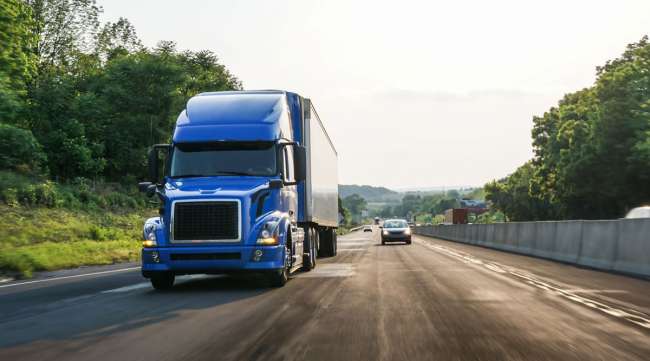With Rush Hour Traffic Gone, Truck Drivers Speed Deliveries

[Stay on top of transportation news: Get TTNews in your inbox.]
Truck drivers have faced a number of hurdles in the wake of the COVID-19 pandemic. But lately, traffic hasn’t been one of them.
A study released March 24 by the American Transportation Research Institute found that trucks not only have been delivering critical groceries, medical equipment and other supplies, they’ve managed to do it faster.
“Not only are trucks continuing to move, but they are doing so at speeds well in excess of normal traffic patterns,” said Rebecca Brewster, the institute’s president and chief operating officer.
A big factor has been the reduction in rush-hour commuter traffic as workers have stayed home and worked remotely. That has allowed trucks to increase average speeds. Along Interstate 495 in Queens, N.Y., for example, the average truck speed more than doubled from 16 mph to 38 mph, although that’s still well below the posted speed.
The speeds are collected from GPS data from more than a million trucks, according to the institute.
“There’s been a shift in the supply chain like we’ve never seen,” said Kendra Hems, president of the Trucking Association of New York. In many cases, trucking companies that may have seen a slowdown in demand are offering their drivers and truck cabs to supermarket chains that have seen a surge in demand, citing one Syracuse-based example.
There were a few hiccups after the pandemic was first declared. Pennsylvania last week shut down its highway rest areas, and truck drivers suddenly had no place to park and rest.
After complaints from drivers and industry organizations, Pennsylvania reopened them. Meanwhile, a nationwide association of privately owned truck stops has pledged to keep them open, said an industry spokesman.
Meanwhile, the New York State Thruway Authority continues to keep its service areas open around the clock, although it has removed seating in its food service areas as part of the restriction against restaurant operations to limit the spread of the coronavirus.
Carriers, meanwhile, are providing drivers with gloves and hand sanitizers, Hems said. And if the truck is carrying emergency supplies, some federal restrictions are being eased to expedite the shipments.
“More than 85 percent of all goods arrive by truck,” said a spokesman for the transportation institute. And happily, they’re arriving more quickly.
“Our GPS data — we’ve never seen (such) truck speeds,” he said. “It’s a whole new game out there.”
Want more news? Listen to today's daily briefing:
Distributed by Tribune Content Agency, LLC




